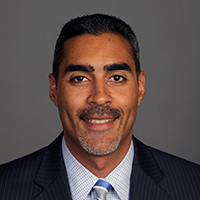It's Time to Start Planning for the 2017 Tax Season
At the end of every calendar year, you should take these steps to try and save on future taxes.

It's hard to think about planning ahead for 2017 taxes when you haven't even thought yet about filing for 2016. But the best time to prepare for the next year's tax season is actually before the current year-end.
Here are some tax-planning strategies to act on at the end of every year. Taking these steps may reduce your tax obligations down the road.
Manage Tax Brackets by Deferring Income
Being placed in a higher income-tax bracket can cost you tens of thousands of dollars. Deferring or reducing income is a way to avoid paying more money if you're on the bracket threshold. Remember that tax brackets are graduated, so only the income that exceeds the threshold for the higher bracket is taxed at the higher rate.
From just $107.88 $24.99 for Kiplinger Personal Finance
Become a smarter, better informed investor. Subscribe from just $107.88 $24.99, plus get up to 4 Special Issues

Sign up for Kiplinger’s Free Newsletters
Profit and prosper with the best of expert advice on investing, taxes, retirement, personal finance and more - straight to your e-mail.
Profit and prosper with the best of expert advice - straight to your e-mail.
You could consider the following two strategies to avoid a higher tax bracket. (Consult with your tax professional to determine the best strategy for your situation.)
Maximize your pretax contribution to a health savings account (HSA). A HSA is used with a high-deductible healthcare plan to save for qualified medical expenses. For 2017, a family may contribute up to $6,750 ($3,400 for individuals), and if you're 55 or older, you can contribute an additional $1,000. Amounts in the account not spent in the event of an account holder's death can transfer to a spouse on a tax-free basis or another named beneficiary as estate income.
Make a donation to charity from your individual retirement account. Individuals age 70½ or older are required to take a minimum distribution from their IRAs. These distributions are considered taxable income. To avoid this, you may instead give up to $100,000 tax-free directly from an IRA to a qualified charity, which you can search for on the IRS website.
Benefit More from Your Charitable Giving
In addition to the above IRA point, there are several benefits to charitable giving when it comes to income taxes. Here are a couple of tips of note before the year-end:
Itemization. Only people who make itemized deductions on income tax returns can deduct charitable contributions, and the deduction is not available to those who claim the standard deduction. If you do choose to itemize deductions, you must have records to substantiate your donations. Notably, all gifts worth $250 or more require a written acknowledgment from the charity describing the gift, date and its value.
Timing. For gifts sent by mail, the envelope must be postmarked by Dec. 31 in order to be deducted on 2016 returns. For gifts of marketable securities, the donor can deduct the full fair market value of the stock and also avoid paying capital gains tax on the appreciation. In contrast to the "postmark rule" above, however, the asset must be delivered to the charity by year-end.
Avoid the Alternative Minimum Tax
The alternative minimum tax (AMT) was enacted to prevent high-income taxpayers from reducing their tax obligations through various legislative loopholes. It is a parallel method of calculating tax liability that expands the amount of taxable income by adding income items that are traditionally tax-free and removing or reducing many deductions allowed under the regular tax system.
The IRS has increased the AMT exemption for 2016, which is the amount taxpayers can deduct from income calculations when determining their potential AMT liability. For individuals, the 2016 exemption begins to phase out at $119,700; for married couples filing jointly, it begins at $159,700.
The best thing to do is to look at your 2015 tax return and determine how close you came to paying the AMT. Then, review your 2016 items that may increase it. Conversely, if you paid the AMT in 2015 but do not need to in 2016, you may be eligible to claim a tax credit for certain items on your 2016 taxes.
Respond to Life Changes
It is good practice to always review your account beneficiaries and trust agreements at the end of the year. For example, the birth of a new grandchild may require an update to your accounts. Other big changes—such as starting or selling a business, buying or selling property beyond your personal home or investments that result in sales, losses or gains—can also influence your tax status.
You should also review your estate plan and documents every several years not only to update family changes, but also to stay current with tax code changes. While there is nothing significant affecting your 2016 filings, tax legislation changes surprisingly often. And with a new president and Congress on the horizon, it doesn't hurt to keep an eye out for new laws or other adjustments, and be ready to make changes to your own filing accordingly.
Beyond that, taking regular stock of your income streams, making the deadlines and anticipating your return in advance of tax season will make it easier when the time to file rolls around each year.
David Terrell is a region manager for The Private Client Group of U.S. Bancorp Investments. He has 20 years of financial planning and wealth management experience, managing a very culturally and economically diverse region.
Profit and prosper with the best of Kiplinger's advice on investing, taxes, retirement, personal finance and much more. Delivered daily. Enter your email in the box and click Sign Me Up.

David Terrell is a region manager for The Private Client Group of U.S. Bancorp Investments. He manages the financial services activity in Southern California, Arizona and Nevada. He has 20 years of financial planning and wealth management experience, managing a very culturally and economically diverse region.
-
 Are You Afraid of an IRS Audit? 8 Ways to Beat Tax Audit Anxiety
Are You Afraid of an IRS Audit? 8 Ways to Beat Tax Audit AnxietyTax Season Tax audit anxiety is like a wild beast. Here’s how you can help tame it.
-
 The Kiplinger Letter's 10 Forecasts for 2026
The Kiplinger Letter's 10 Forecasts for 2026The Kiplinger Letter Here are some of the biggest events and trends in economics, politics and tech that will shape the new year.
-
 We're retired and mortgage-free, but he wants to downsize.
We're retired and mortgage-free, but he wants to downsize.We've paid off our mortgage, have $970K in savings and $5K each month from Social Security. Kiplinger asked wealth planners for advice.
-
 An Expert Guide to How All-Assets Planning Offers a Better Retirement
An Expert Guide to How All-Assets Planning Offers a Better RetirementAn "all-asset" strategy would integrate housing wealth and annuities with traditional investments to generate more income and liquid savings for retirees.
-
 7 Tax Blunders to Avoid in Your First Year of Retirement, From a Seasoned Financial Planner
7 Tax Blunders to Avoid in Your First Year of Retirement, From a Seasoned Financial PlannerA business-as-usual approach to taxes in the first year of retirement can lead to silly trip-ups that erode your nest egg. Here are seven common goofs to avoid.
-
 6 Overlooked Areas That Can Make or Break Your Retirement, From a Retirement Adviser
6 Overlooked Areas That Can Make or Break Your Retirement, From a Retirement AdviserIf you're heading into retirement with scattered and uncertain plans, distilling them into these six areas can ensure you thrive in later life.
-
 I'm a Wealth Adviser: These Are the 7 Risks Your Retirement Plan Should Address
I'm a Wealth Adviser: These Are the 7 Risks Your Retirement Plan Should AddressYour retirement needs to be able to withstand several major threats, including inflation, longevity, long-term care costs, market swings and more.
-
 To Retire Rich, Stop Chasing Huge Returns and Do This Instead, Courtesy of a Financial Planner
To Retire Rich, Stop Chasing Huge Returns and Do This Instead, Courtesy of a Financial PlannerSaving a large percentage of your income, minimizing taxes and keeping spending in check can offer a more realistic path to retiring rich.
-
 Domestic vs Offshore Asset Protection Trusts: A Basic Guide From an Attorney
Domestic vs Offshore Asset Protection Trusts: A Basic Guide From an AttorneyLearn the difference between domestic asset protection trusts and foreign or offshore asset protection trusts to help you decide what might work best for you.
-
 I'm a Wealth Adviser: These 10 Strategies Can Help Women Prepare for Their Impending Financial Power
I'm a Wealth Adviser: These 10 Strategies Can Help Women Prepare for Their Impending Financial PowerAs women gain wealth and influence, being proactive about financial planning is essential to address longevity and close gaps in confidence and caregiving.
-
 I'm a Financial Planning Pro: This Is How You Can Stop These 5 Risks From Wrecking Your Retirement
I'm a Financial Planning Pro: This Is How You Can Stop These 5 Risks From Wrecking Your RetirementYour retirement could be jeopardized if you ignore the risks you'll face later in life. From inflation to market volatility, here's what to prepare for.